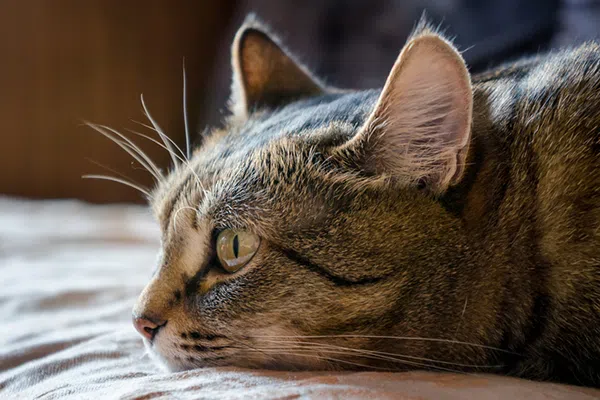Has your kitty foregone the dinner bowl? Author JaneA has penned a piece that most recently appeared at Caster. In real life, she is the webmaster and chief cat slave for Paws and Effect. That’s an award-winning cat advice blog written by her cats, for cats and their people. Additionally, she is a professional member of the Cat Writers’ Association.
My cat, Bella, has been driving me crazy. She’s decided that “I’m not gonna eat that!” is her new favorite game in the world. As food goes, Madame won’t have the chicken — that would be the super-premium raw frozen organic chicken, which she has eaten with gusto for months. Madame also won’t have the duck, because it’s too rich and makes her throw up. Instead, Madame would prefer the rabbit (which, naturally, costs about $8 more a bag than chicken or duck), or, if you please, some low-carb, grain-free pate. Ugh. Is your cat not eating? I know I’m not the only cat parent who has experienced a cat not eating, so here are some things to try when your cat won’t eat.

1. Make sure your cat not eating isn’t a sign that she’s sick
A cat not eating can be a sign that your cat is sick or pain, particularly if it continues for more than one meal. If this is the case, bring your cat to the vet.
2. If you’re committed to a specific cat food brand, try other flavors
If you have an ethical or medical reason you need to stay with a certain brand of food, see whether it comes in other flavors. Think about trying other brands that might provide the same medical or health benefit. Your cat might find the change refreshing.
3. Heat up the cat food
If you’ve kept your cat’s food in the refrigerator, five to 10 seconds in the microwave will heat it up to about body temperature, and the smell will become attractive to your cat. If you don’t have a microwave, try mixing some warm water into the food instead.

4. Add something tasty to your cat’s food
Try sprinkling your finicky cat’s food with a tempting treat like bonito flakes or cat vitamin powder.
5. Keep your cat’s dishes and bowls clean
This is especially important if your cat eats canned or raw food because germs can start growing in scraps of leftover food and cause illness. A cat not eating might hate the smell of her dishes or food. Cats are instinctively driven to avoid consuming putrid-smelling meat. If you use plastic dishes, replace them with metal or ceramic because they’re easier to keep clean.
6. Try different cat dishes
A cat not eating might simply dislike his bowl. Some cats don’t like deep or narrow dishes because they constrict the whiskers. Flat-faced or brachycephalic cats such as Persians, Himalayans and Exotic Shorthairs should not be eating from plates or shallow bowls anyway.
7. Don’t hide medications in your cat’s food
Once upon a time, I ground a pill up and put it in my cat’s food. What I didn’t know was that the medicine was really bitter. My cat refused to touch it, and she never ate that particular brand and flavor of food again. Some medications come in flavors that appeal to cats, but they’re few and far between. Ask your vet before trying the powdered-pill-in-food trick.
8. Remember — choose your battles!
Is it really that important to you that your cat eats just one flavor of just one brand? Even if you love pizza, you’d get sick of it if you had to eat it every day for the rest of your life. This is the approach I’ve taken with Bella, and frankly, it’s what I should have done from the start. Cats need and deserve some variety in their diet, just like us.
Tell us: Is your cat not eating? What did you do when your cat wouldn’t eat? Please share your stories and tips for a cat who won’t eat in the comments!
Featured Image: Photography by aleg baranau / Shutterstock.
This piece was originally published in 2015.

